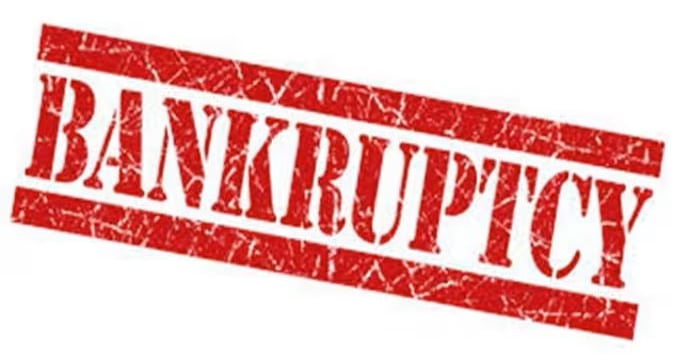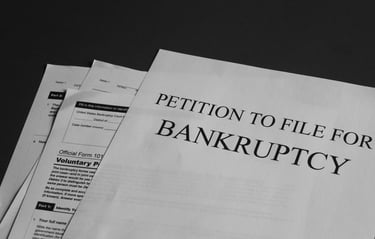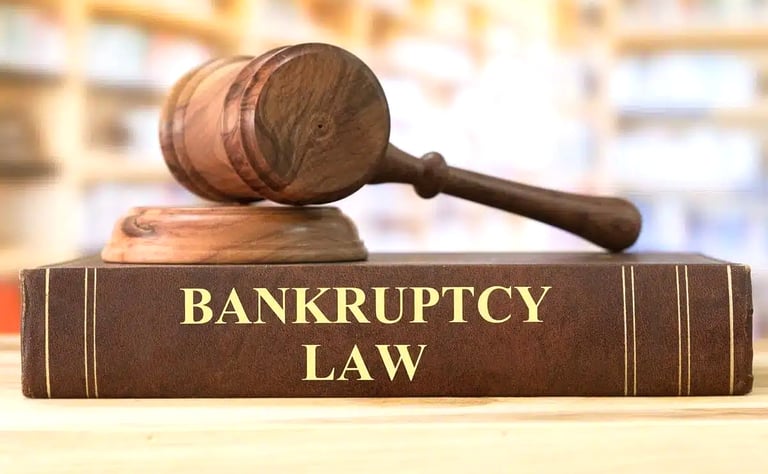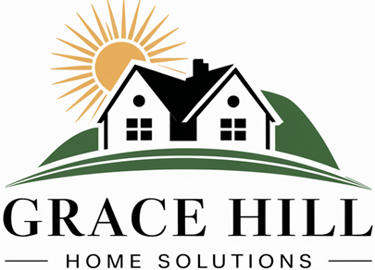How to Avoid Foreclosure with Bankruptcy: A Practical Guide
This guide will show you how to avoid foreclosure with bankruptcy and achieve debt relief. We'll cover practical steps to stop foreclosure and keep your home.


Key Takeaways and Foreclosure Basics
Bankruptcy provides an automatic stay that halts foreclosure proceedings and other collection efforts, allowing homeowners time to manage their financial situation.
Chapter 13 enables homeowners to repay missed mortgage payments through structured repayment plans, making it an effective option.
Consulting with a bankruptcy attorney is essential for navigating the complexities, as they offer tailored legal strategies to protect homeowners'assets.
How to Avoid Foreclosure: A Practical Guide
Foreclosure is a process initiated by lenders to reclaim homes after homeowners miss multiple mortgage payments. When the proceedings start, homeowners are usually notified, and state laws dictate whether the process will be judicial foreclosure or nonjudicial. This guide will explore practical ways bankruptcy can help avoid the foreclosure process, highlighting legal provisions that offer immediate relief and long-term solutions.
One of the most powerful tools in bankruptcy is the automatic stay, which halts most collection activities. This provision can stop foreclosure proceedings, wage garnishments, and even phone calls from creditors, offering homeowners much-needed breathing room to organize their finances. The bankruptcy court plays a critical role in enforcing the automatic stay.
The bankruptcy court also confirms repayment plans and addresses motions like lien stripping, which can significantly impact a homeowner's property and debts. If you've had a previous bankruptcy case, an attorney skilled in bankruptcy law can help guide you through the process.
Understanding the nuances of Chapter 7 and Chapter 13 bankruptcies is crucial. While both can delay the foreclosure process, they serve different purposes and have unique benefits. Chapter 13, for instance, allows homeowners to repay overdue mortgage payments over time, making it a more viable option for those looking to save their homes. The goal is to equip you with the knowledge to make informed decisions and take timely action to protect your home
Introduction
Understanding the intricacies of Chapter 13 and Chapter 7 bankruptcies is essential. Chapter 13 allows for a structured repayment plan, while Chapter 7 offers temporary relief but does not always prevent foreclosure permanently. This guide will delve into both, highlighting their benefits and limitations.
This guide aims to provide a clear understanding of navigating the bankruptcy process to prevent foreclosure, including insights on the automatic stay provision, creating plans, and addressing junior mortgages. Consulting with a bankruptcy attorney for tailored strategies will also be covered.
Understanding Foreclosure and Its Consequences
Foreclosure is a legal process used by lenders to reclaim a home when the homeowner falls behind on mortgage payments. This process is governed by state laws, which can vary significantly, resulting in either judicial or nonjudicial foreclosure proceedings. When a mortgage lender forecloses, missing several mortgage payments can lead to the initiation of the process, putting homeowners at risk of losing their property.
One of the critical tools available to homeowners in this situation is the automatic stay provision, which bans creditors from continuing collection actions and stops foreclosure proceedings. This provision also prevents wage garnishments and halts foreclosure actions, offering immediate, albeit temporary, relief. An automatic stay order instructs creditors to cease nearly all collection efforts.
The consequences of foreclosure extend beyond the loss of a home. It significantly damages the homeowner's credit score, making future borrowing more difficult. Understanding these impacts is crucial for anyone facing potential foreclosure, as it underscores the importance of exploring all available options
Key Steps and Foreclosure Basics
The foreclosure filing process begins when homeowners fall behind on mortgage payments, typically after several missed payments. Before the process officially starts, homeowners might consider options such as loan forbearance, short sales, or deeds in lieu of foreclosure.
Once foreclosure proceedings begin, the lender takes legal steps to either take possession of the house or sell it to recover the outstanding mortgage debt. During this period, homeowners have the right of redemption, which allows them to pay off the mortgage balance and foreclosure costs to regain their property, although this right varies by state.
Understanding these steps is vital for homeowners to navigate the process and explore timely solutions to prevent losing their homes. Being proactive and knowledgeable about the foreclosure process can make a significant difference in the outcome.
Impact on Credit Score and Future Borrowing
Foreclosure can significantly damage a homeowner's credit score, often lowering it by several hundred points. This damage can affect the homeowner's ability to obtain future loans, as mortgage lenders view foreclosure as a severe credit default.
The implications of a damaged credit score extend to higher interest rates on loans and difficulty in securing credit for several years. Facing foreclosure often means dealing with substantial financial setbacks, making it crucial for homeowners to seek debt relief options like bankruptcy to mitigate these long-term impacts on their financial picture
Filing for Chapter 7 Bankruptcy
Filing for Chapter 7 bankruptcy can delay foreclosure by several months, offering temporary relief but not a permanent solution. The primary function of Chapter 7 bankruptcy regarding foreclosure is to provide a temporary halt, allowing homeowners some time to address their financial issues. However, it does not help in making up missed mortgage payments.
One way to prevent foreclosure after filing for Chapter 7 bankruptcy is to bring mortgage arrears current or negotiate a loan modification with the mortgage lender. Typically, it takes about three to four months to receive a discharge order after filing for Chapter 7, during which time the foreclosure process is paused.
These limitations help homeowners decide if Chapter 7 through the bankruptcy court is right for their situation to help them find debt relief
Filing for Chapter 13 Bankruptcy
Chapter 13 bankruptcy allows homeowners to catch up on missed mortgage payments through a structured plan. This plan enables homeowners to pay back late payments over a period of three to five years while keeping their homes. This structured approach is particularly beneficial for those with a steady income but who have fallen behind on payments due to temporary financial setbacks.
Mortgage modification mediation programs can also facilitate the negotiation process between borrowers and lenders during Chapter 13 bankruptcy, potentially leading to more manageable payment terms. This aspect of Chapter 13 makes it a powerful tool for homeowners at risk of losing their home to foreclosure.
Homeowners filing for Chapter 13 bankruptcy should be aware of state homestead exemptions and other requirements. These legal provisions can offer additional protections and benefits, making Chapter 13 an attractive option for many homeowners.
How Chapter 13 Bankruptcy Helps Save Your Home
Chapter 13 bankruptcy provides homeowners with a structured repayment plan to catch up on missed mortgage payments, allowing them to save their homes from foreclosure. This plan typically spans three to five years, during which homeowners make regular payments to address their mortgage arrears.
The ability to restructure debt and propose a payment plan makes Chapter 13 bankruptcy a powerful tool for homeowners at risk of losing their home to foreclosure. Junior mortgages, if the home's value is less than the first mortgage, can be stripped and reclassified as unsecured debts, thus eliminating their payments.
This section explores creating a repayment plan, mortgage modification options, and addressing junior mortgages to provide a comprehensive understanding of how Chapter 13 can help save your home.
Creating a Repayment Plan
Creating a plan under Chapter 13 bankruptcy involves several key steps. The plan must be reviewed and approved by the trustee, creditors, and the bankruptcy judge. This ensures that the plan is fair and feasible for all parties involved.
Homeowners must demonstrate that their income is sufficient to cover both arrearage payments and past due mortgage payments as well as current mortgage payments. This dual payment requirement is crucial to ensure that the homeowner can sustain the repayment plan over its duration. Payments typically start approximately 30 days after filing for Chapter 13.
Homeowners must make all required payments until the end of the repayment plan to avoid foreclosure. Missing payments can jeopardize the entire process, highlighting the importance of financial discipline and planning
Mortgage Modification Option
During Chapter 13 bankruptcy, individuals can explore modifications to their mortgage company to make payments more manageable. Mortgage Modification Mediation Programs streamline the mortgage modification process and connect lenders with borrowers, facilitating negotiations.
These modifications aim to reduce monthly mortgage payments, helping homeowners maintain their homes during financial hardship. Utilizing these mortgage modification options can be crucial for homeowners trying to avoid the foreclosure process.
By negotiating better terms, homeowners can achieve a more sustainable financial life, making it possible to stay current on their payments and avoid future foreclosure. If your monthly payment has become a burden, Grace Hill Solutions can help you with a free consultation to review your other debts and determine if you have enough equity to pursue a modification. We'll make the phone calls with you to the lender to ask the right questions that can help avoid a potential foreclosure
Addressing Junior Mortgages
In Chapter 13 bankruptcy, junior mortgages can be restructured as unsecured debts, potentially lowering total debt payments. This reclassification can eliminate the payments on these junior mortgage, significantly reducing the homeowner's financial burden.
Lien stripping in Chapter 13 allows homeowners to remove junior mortgages that are no longer secured by the property's value. If a home's value is lower than the first mortgage, junior mortgages can be eliminated as debts.
Chapter 7 bankruptcy can cancel debts tied to a home, such as junior mortgages, but it may not help homeowners retain their properties. These options help homeowners make informed decisions about managing debts and protecting their homes
Emergency Bankruptcy Filings to Halt Foreclosure
An emergency bankruptcy filing allows individuals to quickly obtain an automatic stay, preventing creditors from initiating collection efforts immediately. This type of filing is crucial for homeowners facing imminent foreclosure, as it mandates lenders to cease foreclosure actions and can postpone a scheduled sale for three to four months.
To complete an emergency bankruptcy, applicants must file additional required documents within 14 days after the initial petition to prevent dismissal. This timeline provides a brief but critical window for homeowners to organize their finances and explore other options, such as renegotiation or short sales.
Emergency bankruptcy filings can be a lifeline for homeowners in dire situations, offering immediate relief and a chance to regroup financially.
Emergency Petition Requirements
To file an emergency bankruptcy petition, the homeowner must complete essential forms and provide basic documentation, although less information is needed than for a standard filing. The required documents include a bankruptcy petition, creditors' contact information, a credit counseling certificate, and Form B121.
It's essential to complete these initial forms accurately to ensure the petition is accepted. The debtor must provide a list of creditors and a completed petition form, even if other documents are pending.
This streamlined process is designed to provide quick relief, but it also requires prompt and precise action from the homeowner to maintain the protections granted by the filing.
Timeline and Deadlines
After an emergency bankruptcy filing, full documentation must typically be completed within 14 days to maintain the protections granted by the initial filing. Certain documents must be submitted on the same day as the bankruptcy petition, while others are due within 72 hours and 14 days after the petition is filed.
Failure to submit the complete set of documents within the specified timeframe can lead to the dismissal of the petition. This dismissal can remove the automatic stay, allowing foreclosure proceedings to resume.
Adhering to these deadlines is crucial for homeowners using emergency bankruptcy filings to halt foreclosure. Prompt action and thorough documentation are essential to maintaining bankruptcy protections
Post-Foreclosure Bankruptcy Considerations
You can file for bankruptcy even after a foreclosure judgment has been issued. Filing for bankruptcy after foreclosure may not be necessary unless you owe money, but it can still offer significant benefits depending on the homeowner's financial situation.
Both foreclosure and bankruptcy negatively impact credit scores, but bankruptcy typically has harsher long-term effects. Chapter 7 bankruptcy remains on credit reports for ten years, while Chapter 13 and foreclosures stay for seven years.
If a homeowner has filed for bankruptcy previously, the automatic stay may be limited to only 30 days or not apply at all. These considerations help homeowners decide when and how to file for bankruptcy post-foreclosure.
Dealing with Deficiency Judgments
A deficiency balance represents the gap between the mortgage debt and the sale price of the property. In foreclosure, a deficiency balance is the difference between the mortgage balance and the sale price.
In Chapter 7 bankruptcy, a deficiency judgment is categorized as dischargeable unsecured debt. This means that bankruptcy can eliminate liability for mortgage deficiencies after foreclosure.
In Chapter 13 bankruptcy, deficiency judgments are treated as unsecured debt, allowing for repayment through a structured plan. Filing for bankruptcy protects borrowers against evolving debt from deficiency balances, offering a path to financial recover
Rebuilding Credit Post-Bankruptcy
After bankruptcy, it's crucial to establish new credit responsibly to foster financial recovery.
This process involves:
Managing existing debts methodically, which aids in improving credit scores over time.
Catching up on debt.
Reducing interest rates on car loans, which can significantly contribute to rebuilding credit.
A responsible approach to new credit and managing debts is essential for achieving financial stability post-bankruptcy. By taking these steps, homeowners can gradually restore their creditworthiness and regain financial independence
Working with a Bankruptcy Attorney
Seeking professional legal advice from an attorney is crucial to navigate the complexities of bankruptcy and foreclosure. Hiring a local bankruptcy trustee ensures that you have access to professionals who understand local laws and can better protect your assets.
Online articles cannot adequately address all bankruptcy issues or the specifics of your case, which is why consulting an attorney is essential. A qualified attorney can provide specialized knowledge and guidance throughout the bankruptcy process, helping you make informed decisions..
Finding the Right Bankruptcy Lawyer
Hiring a qualified bankruptcy lawyer is crucial as they can provide specialized knowledge and guidance throughout the bankruptcy process. It is essential to choose a lawyer who has specific experience in foreclosure cases, as this knowledge can impact the effectiveness of your bankruptcy filing.
During the initial consultation, it's important to ask about the lawyer's experience, fees, and approach to handling bankruptcy cases, fostering a mutual understanding before engagement. This ensures that you select the right professional to support your case.
Preparing for Your Consultation
Preparing for your consultation with a bankruptcy attorney is crucial to ensure a productive initial meeting. Bring proof of identity, income documentation, and a comprehensive list of all debts to ensure your attorney has the necessary information for your case.
Providing these documents allows your attorney to evaluate your financial situation accurately and propose the most viable options for avoiding foreclosure. This preparation can make a significant difference in the outcome of your bankruptcy case
Summary
In summary, bankruptcy can be a powerful tool to prevent foreclosure and provide a path to financial recovery. By understanding the differences between Chapter 7 and Chapter 13 bankruptcies and utilizing the automatic stay provision, homeowners can gain immediate relief and a structured plan to address missed mortgage payments.
Timely action and professional advice are crucial in navigating the complexities of bankruptcy and foreclosure. Consulting with a bankruptcy attorney ensures that homeowners receive tailored legal strategies to protect their homes and financial futures.
By taking control of your financial situation and exploring all available options, you can overcome the challenges of foreclosure and rebuild your credit over time. Remember, there is hope and help available to guide you through this difficult period.
If your monthly payment has become a burden, Grace Hill Solutions can help you with a free consultation to review your other debts and determine if you have enough equity to pursue a modification. We'll make the phone calls with you to the lender to ask the right questions that can help avoid a potential foreclosure
Frequently Asked Questions
Can bankruptcy stop a foreclosure sale scheduled for the next day?
Yes, filing for bankruptcy can halt a foreclosure sale scheduled for the next day due to the automatic stay provision. This legal measure provides immediate protection from such actions.
How long does Chapter 7 bankruptcy delay foreclosure?
Chapter 7 bankruptcy generally delays foreclosure for approximately four months. During this time, it is essential to consider your long-term financial options.
What is the primary benefit of Chapter 13 bankruptcy for homeowners?
The primary benefit of Chapter 13 bankruptcy for homeowners is the ability to establish a structured repayment plan to regain missed mortgage payments over a three to five-year period, thereby retaining their homes. This option provides a crucial opportunity for financial recovery and stability.
What documents are required for an emergency bankruptcy filing?
For an emergency bankruptcy filing, you will need to provide a bankruptcy petition, contact information for your creditors, a credit counseling certificate, and Form B121. These documents are crucial to expedite the process and ensure compliance.
How can homeowners rebuild their credit post-bankruptcy?
Homeowners can effectively rebuild their credit post-bankruptcy by responsibly establishing new credit, managing existing debts diligently, and ensuring timely debt payments. Taking these steps consistently will significantly enhance their credit score over time.
The Role of Bankruptcy in Preventing Foreclosure
Filing for bankruptcy can provide homeowners with potential debt relief and a way to halt foreclosure proceedings temporarily, offering a crucial window of time to address missed payments. The automatic stay issued upon filing for bankruptcy by the bankruptcy court is a powerful tool that halts most collection activities, including foreclosure, providing immediate relief. This stay can prevent foreclosure actions, wage garnishments, and other collection efforts, giving homeowners a chance to regroup financially.
The bankruptcy court oversees the process and ensures compliance with legal requirements, confirming repayment plans and addressing motions like lien stripping that can affect a homeowner's property and debts.
Chapter 13 bankruptcy is particularly beneficial for homeowners facing foreclosure, as it allows them to halt foreclosure proceedings and repay overdue mortgage payments over a set timeframe. Homeowners must understand the distinctions between different bankruptcy chapters to effectively stop foreclosure and achieve debt relief.
Chapter 7 bankruptcy generally pauses foreclosure actions but may not prevent them entirely. Consulting an attorney can provide tailored legal strategies to navigate the complexities of bankruptcy and foreclosure, ensuring homeowners make the best decisions for their financial situation to help bankruptcy stop foreclosure.
Automatic Stay: Immediate Relief
The automatic stay initiated by bankruptcy filing prevents creditors from continuing collection efforts, including foreclosure sales. This provision can provide immediate relief for homeowners, stopping foreclosure sales even if they are scheduled for the next day.
Typically, the automatic stay postpones foreclosure sales for about three to four months, providing a temporary reprieve for homeowners to explore other financial options. However, the stay can be lifted if a lender files a motion, although this process also tends to delay the sale, offering additional time.
The immediate benefits of the automatic stay can be a game-changer for homeowners facing imminent foreclosure, providing a critical opportunity to seek debt relief and protect their homes






